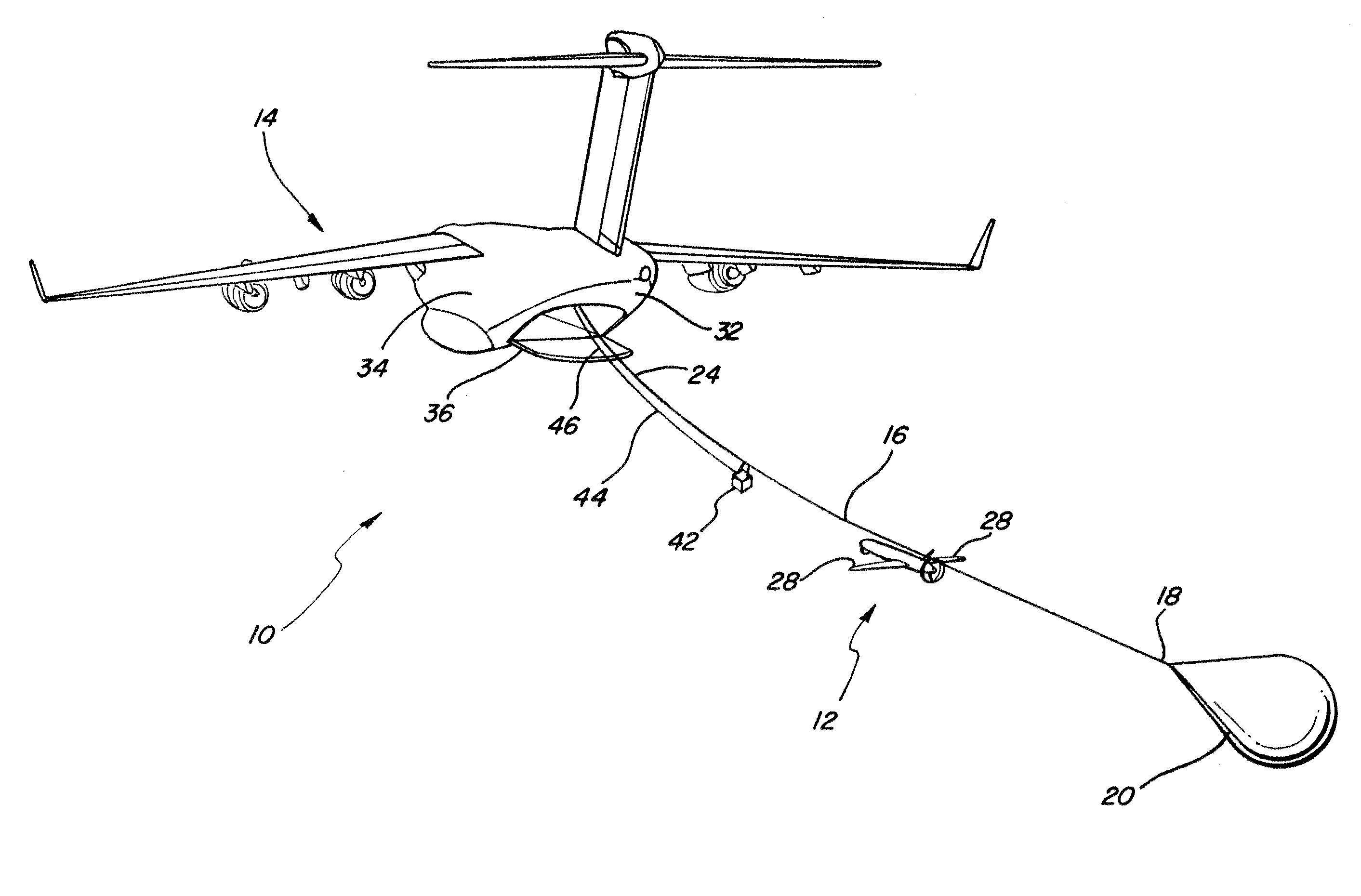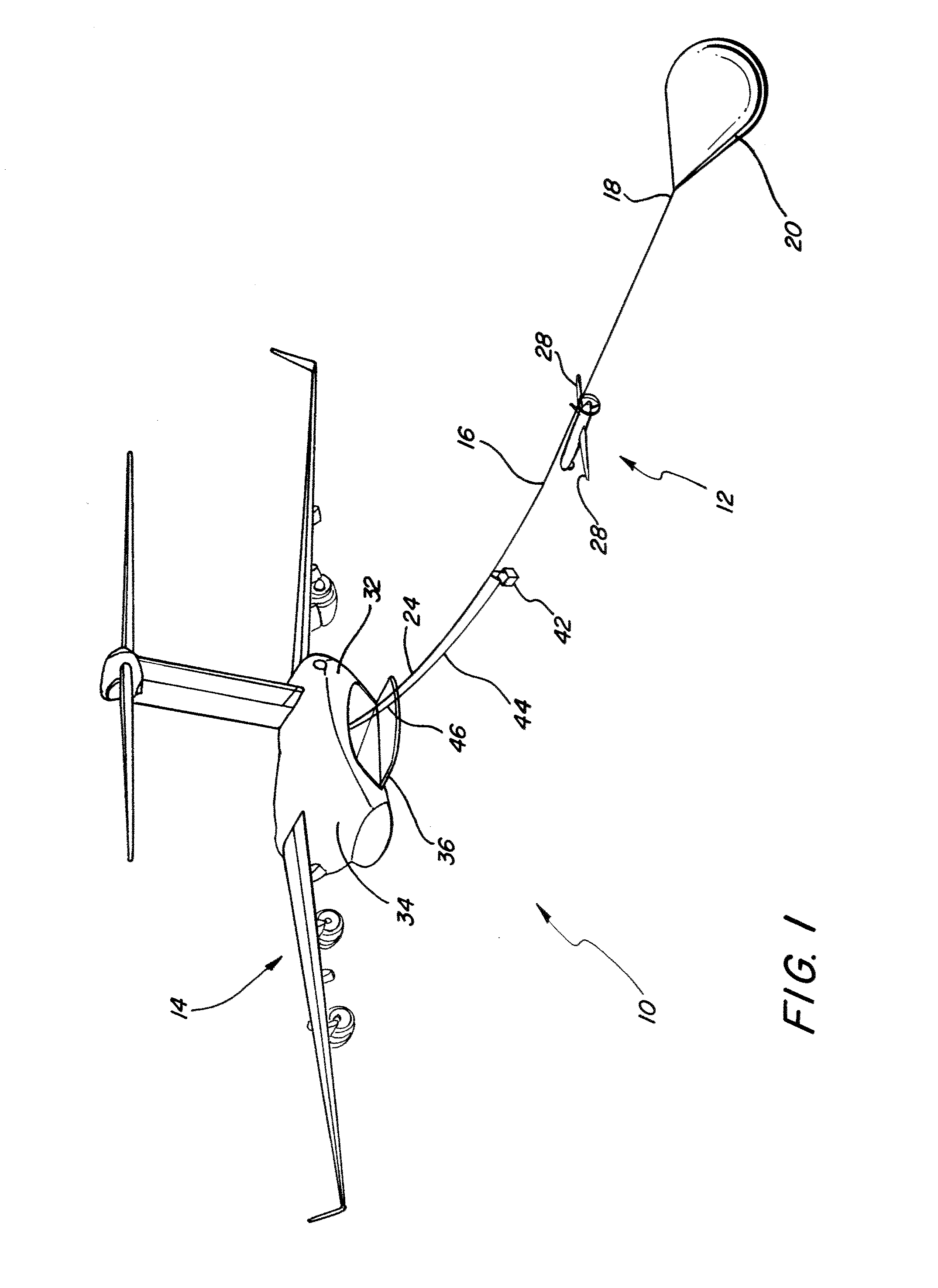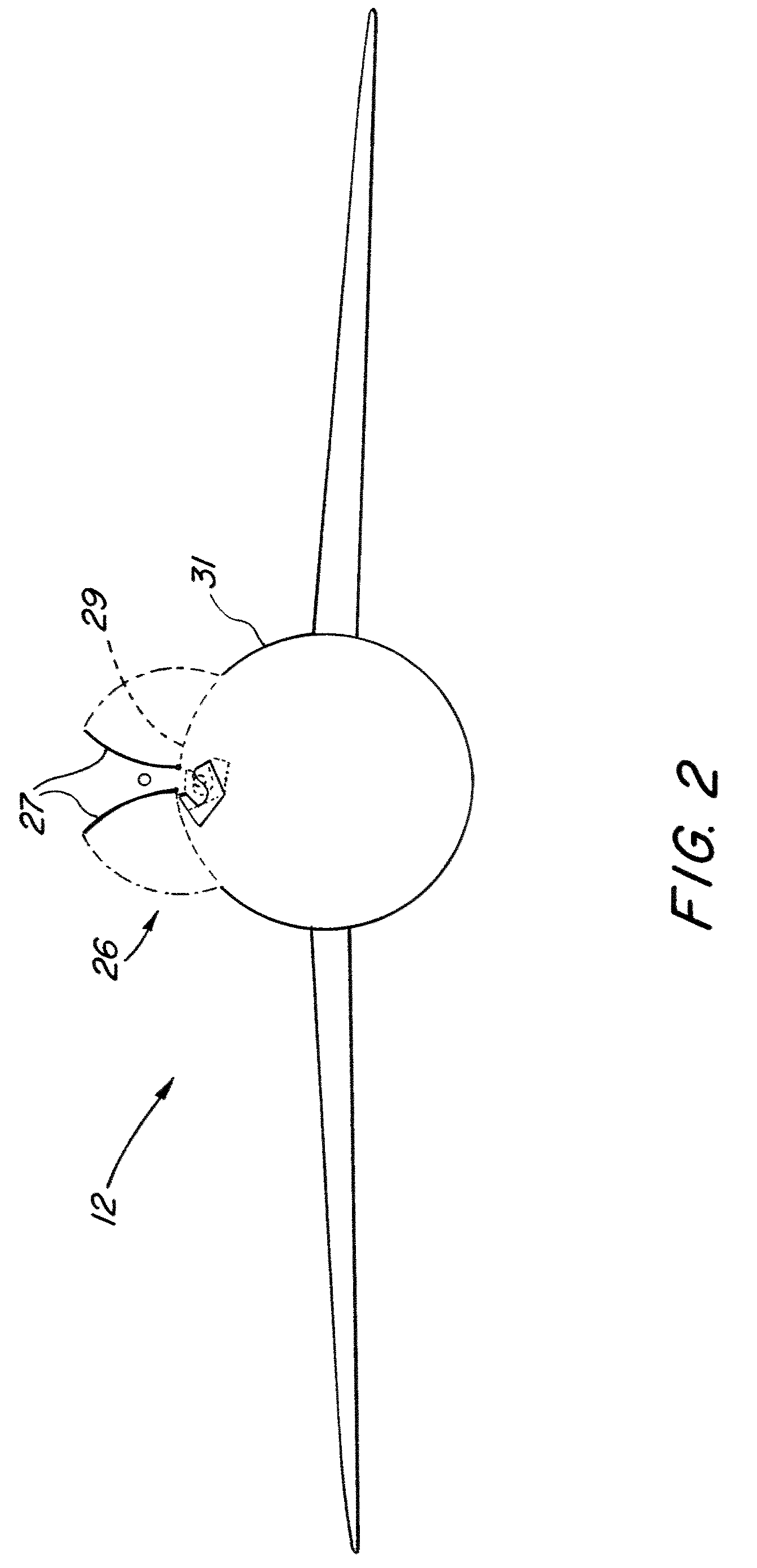System and methods for airborne launch and recovery of aircraft
a technology for airborne launch and aircraft, applied in the field of aircraft, can solve the problems of limited tactical aircraft, increased limitations, and increased limitations of man-portable air defense systems, and achieve the effect of recovering and launching aircraft smoothly
- Summary
- Abstract
- Description
- Claims
- Application Information
AI Technical Summary
Benefits of technology
Problems solved by technology
Method used
Image
Examples
Embodiment Construction
”, one will understand how the features of the present embodiments provide advantages, which include the ability to recover and re-launch aircraft so that their missions can be extended indefinitely, and the ability to recover and launch aircraft smoothly without being significantly affected by turbulent airflow near the mother ship.
[0009]One aspect of the present embodiments includes the realization that it would be advantageous to be able to launch and recapture aircraft, such as UCAVs, from an airborne mother ship. The ability to recapture the aircraft would advantageously enable refueling, re-supplying, rearming and / or reconfiguration of the aircraft in flight, during the course of a mission. Such capabilities would enable the mission of each such aircraft to be extended indefinitely.
[0010]One embodiment of the present system for airborne launch and recovery of aircraft comprises a flexible tether configured to be towed behind an airborne mother ship, and a drag device secured t...
PUM
 Login to View More
Login to View More Abstract
Description
Claims
Application Information
 Login to View More
Login to View More - R&D
- Intellectual Property
- Life Sciences
- Materials
- Tech Scout
- Unparalleled Data Quality
- Higher Quality Content
- 60% Fewer Hallucinations
Browse by: Latest US Patents, China's latest patents, Technical Efficacy Thesaurus, Application Domain, Technology Topic, Popular Technical Reports.
© 2025 PatSnap. All rights reserved.Legal|Privacy policy|Modern Slavery Act Transparency Statement|Sitemap|About US| Contact US: help@patsnap.com



